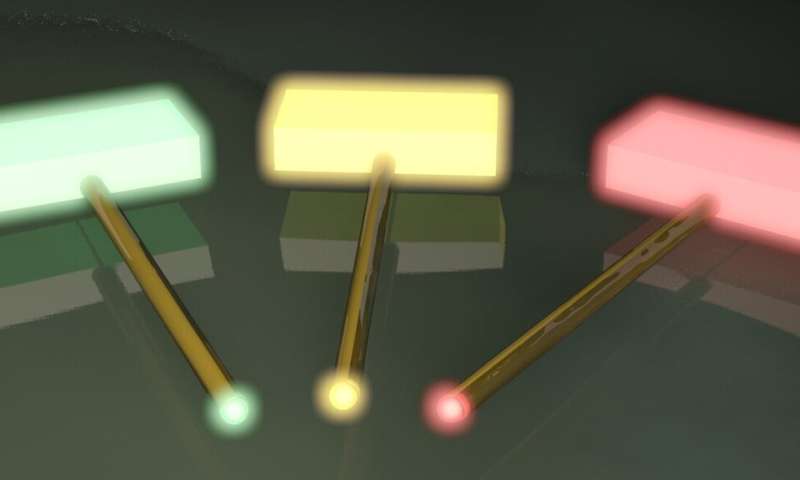
The modern photonics industry is constantly working on making its devices more compact, be it computing systems or sensors and lidars. For this, it is necessary to make lasers, transistors and other elements smaller. A team of scientists led by ITMO researchers proposed a quick and affordable method to create optical chips right in a Petri dish. The research was published in ACS Nano.
Today, using devices that are based on microscopic lasers and optical chips is becoming increasingly common. They are used in the production of lidars, in the development of new biosensors, and in the future, they can become the foundation for new optical computers that will use photons rather than electrons to transfer and process information. Today's optical chips operate in the infrared (IR) range, i.e. the lasers they use emit at the wavelengths that's invisible to the human eye.
"But to make the devices even more compact, we need to work in the visible range, as the size of a chip depends on the wavelength of its emission," says Sergey Makarov, chief researcher at ITMO's Department of Physics and Engineering.
An optical chip consists of such components as lasers and waveguides. While creating a source that would emit in the green or red part of the spectrum is quite easy, waveguides for these wavelengths can be an issue.
"A microlaser is a source of emission that you need to guide somewhere," says Ivan Sinev, senior researcher at ITMO's Department of Physics and Engineering. "And this is what waveguides are for. But the standard silicon waveguides that are used in IR optics do not work in the visible range. They transmit the signal no further than several micrometers. For an optical chip, we need to transmit along tens of micrometers with a high localization, so that the waveguide would have a very small diameter and the light would go sufficiently far through it."
Scientists have made attempts to replace silicon waveguides with silver ones, but the transmission distance in such systems was also insufficient. In the end, a team of scientists that included specialists from ITMO University used gallium phosphide as a material for the waveguides, as it has very low losses in the visible band. But the most important thing is that both the light source can be grown directly on a waveguide in a Petri dish using solution chemistry methods, which is far cheaper than the commonly used nanolithography.
The size of the new chip's elements is about three times smaller than that of its counterparts that work in the IR spectral range.
"The chip's important property is its ability to tune the emission color from green to red by using a very simple procedure: an anionic exchange between perovskite and hydrogen halides vapor," says Anatoly Pushkarev, senior researcher at ITMO's Department of Physics and Engineering. "Importantly, you can change the emission color after the chip's production, and this process is reversible. This could be useful for the devices that have to transmit many optical signals at different wavelengths. For example, you can create several lasers for such a device, connect them to a single waveguide, and use it for transmitting several signals of different colors at once."
The scientists also equipped the newly created chip with an optical nanoantenna made of perovskite that receives the signal traveling along the waveguide and allows uniting two chips in a single system.
"We added a nanoantenna at the other end of our waveguide," explains Pavel Trofimov, Ph.D. student at ITMO's Department of Physics and Engineering. "So now, we have a light source, a waveguide, and a nanoantenna that emits light when pumped by the microlaser's emission. We added another waveguide to it: as a result, the emission from a single laser went into two waveguides. At the same time, the nanoantenna did not just connect these elements into a single system, but also converted part of the green light into the red spectrum."
Explore further
Citation: Scientists grow optical chips in a petri dish (2020, June 16) retrieved 16 June 2020 from https://ift.tt/2N5yCQ1
This document is subject to copyright. Apart from any fair dealing for the purpose of private study or research, no part may be reproduced without the written permission. The content is provided for information purposes only.
"chips" - Google News
June 16, 2020 at 11:06PM
https://ift.tt/2N5yCQ1
Scientists grow optical chips in a petri dish - Phys.org
"chips" - Google News
https://ift.tt/2RGyUAH
https://ift.tt/3feFffJ
Bagikan Berita Ini















0 Response to "Scientists grow optical chips in a petri dish - Phys.org"
Post a Comment